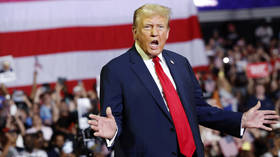NATO chief’s push for Ukraine funding fails – media

NATO member states have rejected a proposal by Secretary General Jens Stoltenberg to spend €40 billion ($43 billion) a year on aid for Ukraine, several media outlets have reported. The constituent countries, however, have agreed to earmark this sum for Kiev’s needs next year, Reuters claimed.
Since late May, the outgoing secretary general has on multiple occasions urged member states to make a long-term funding commitment at the upcoming NATO summit in Washington, DC on July 9-11.
During a press conference last month, Stoltenberg claimed that “allies have provided around €40 billion worth of military support to Ukraine each year” since 2022. The NATO chief said he wanted to “maintain this level of support for as long as necessary,” securing “fresh funding every year.”
On Wednesday, Germany’s Deutsche Presse-Agentur, citing unnamed sources from several delegations present at NATO consultations, claimed that Stoltenberg’s proposal had fallen through due to opposition from member states.
Reuters also reported that Stoltenberg’s original request had been turned down, with member states merely stating their intention to re-evaluate allied contributions at future NATO summits.
They also vowed to prepare two reports over the course of the next year to clearly establish each nation’s area of responsibility in terms of aid for Ukraine. The mechanism would supposedly be based on the GDP of member states, with more affluent nations expected to foot most of the bill.
Speaking during a press conference in mid-June, Stoltenberg recounted how the “United States spent six months agreeing to a supplemental for Ukraine.” He also lamented that “some of the promises that the European allies have made have not been delivered.”
“And if we turn this into not voluntary contributions, but NATO commitments, of course it will become more robust, it will become more reliable,” he argued at the time.
Stoltenberg also touted the creation of a Security Assistance Group for Ukraine, which would be based in Wiesbaden, Germany. The structure is expected to coordinate NATO military assistance for Ukraine, with the chief of the US European Command, General Christopher Cavoli, at the helm.
Some observers have speculated that the new, less-US-centered infrastructure is meant as a substitute, should the existing Ramstein group begin to falter. These concerns are understood to have been growing within NATO as a second Trump term stateside appears more likely.
The Republican hopeful has repeatedly criticized the Biden administration’s generous handouts to Kiev, and vowed to end the Ukraine conflict in short order if elected.













